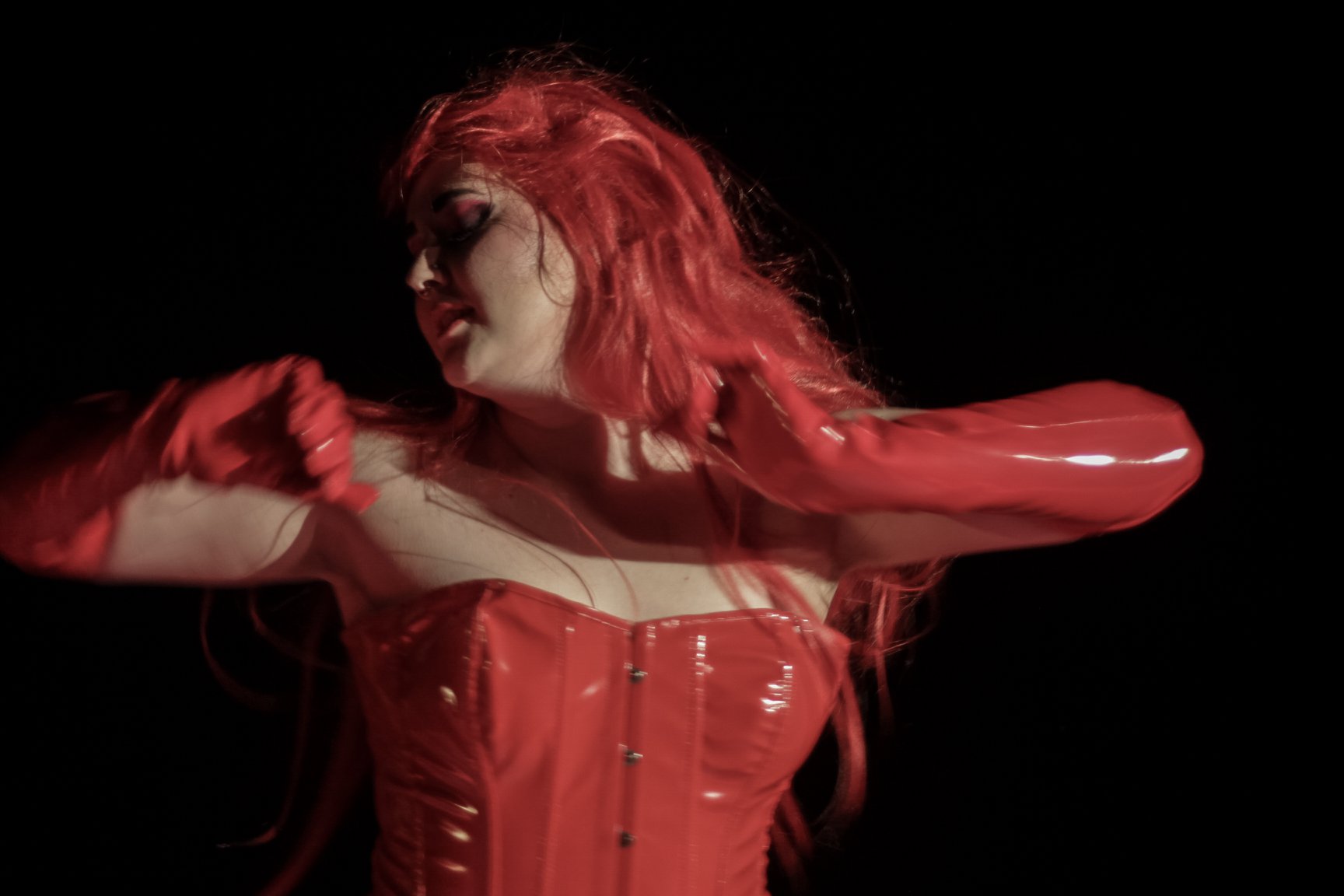Review of The Rules, Yale Cabaret
Playwright Charles Mee’s “The (Re)Making Project” invites theater groups to take the scripts on his website and “use them freely as a resource for your own work: that is to say, don't just make some cuts or rewrite a few passages or re-arrange them or put in a few texts that you like better, but pillage the plays . . .” The latest offering at the Yale Cabaret is a remaking or “pillaging” of Mee’s play The Rules, which began life with the title “The Constitutional Convention: A Sequel.” With that in mind, the Cab’s version, adapted by Dakota Stipp, Zachry J. Bailey, Alex Vermillion, and Evan Hill, begins with some of the text of the Constitution, cut-up and overlapped in a busy voice-over that becomes a hallmark of this funny, unsettling, and exhilarating show.
Mee’s lines have a certain delirium. They tend to be stream-of-consciousness even when there’s dialogue because everyone in The Rules seems to be contemplating or recalling or trying—arguably, in Mee’s words—"to arrive at a new set of conventions to live by, now that the old ones are gone.” But what conventions, exactly? Conventions of social intercourse? Conventions of gender, of genre? Conventions of the artifice called theatrical representation?
All of the above, as I read it. Three actors—Adrienne Wells as Susan, David Mitsch as Arthur, and Robert Hart as David—enact scenes that amount to performance art pieces, for the most part. Seated fully clothed in a bathtub, Susan might be talking about an exercise regimen while David enacts the trainer as a kind of stock figure of guttural humor. Or Arthur might be remembering the first Thanksgiving as a a macabre feast upon the dead with Susan vaguely questioning his accuracy.
While Susan is fairly consistent in her airy tones, David—in Hart’s hands—is an assault of mercurial voices, including the yuk-yuk tones of a stand-up comic of the old school, and a carefully paced rap about racial profiling that feels all-too-contemporary. Meanwhile, Arthur, who begins the evening looking fairly butch in his cowboy hat and distressed jeans, eventually finds himself sporting red high-heels, and later comes onstage in full drag, wearing an amazing get-up of a gown (April Hickman & Yunzhu Zeng, costumes). His in-out-and-all-around-the-tub performance, lip-synching with passionate abandon to 4 Non-Blondes’ early ‘90s hit “What’s Up?”, is the kind of tour de force show-stopper one sometimes encounters at the Cab. It’s so over-the-top it pushes the entire show to another level.
But that’s not to overlook other aspects of the show—such as a strange monologue by Susan, quite amused, about how she “came into her own,” or a video of a woman engaging in what we’re supposed to take as cannibalism while the cast disputes the etiquette for eating one’s own species. There’s also a more phrenetic speech by Susan, as she wanders the stage as though on a catwalk, considering where the selling of oneself enters an area forbidden by “the rules”—selling one’s body for sex, selling one’s body parts for someone else’s use?
From the later 1990s, The Rules feels very much of the moment in this bracing production. Mee’s script, in giving us speakers isolated in their self-regard, easily updates into the era of the selfie and the choice of one’s phone as preferred amusement, interlocutor, and chronicler. Here, the characters are monologues aware they’re overheard, set on a spare white stage with the feel of an austere boudoir, enhanced by lights and projections to become a space where we regard these embodied voices as significant things. As Susan says, dreamily, “Life is more complicated now than it used to be. People have relationships these days with their objects, and sometimes just with pictures of their objects.”
Throughout the show, there is much interesting use of sound—Dakota Stipp, sound design and composer. The overlapping of voices and a wide-range of sound effects and electronics—including the sounds from the phones of patrons who texted to a prescribed number—make the show a multi-media onslaught, never dull, often quizzical. If we feel implicated in what we’re watching it’s because of the many ways we’ve all learned to navigate identity as an aspect of the internet and other media. We don’t necessarily know “the rules” for the many versions of virtual community, but their protocols bleed into the world we take up space in. And—what’s even more to the point I think—we don’t know what it is precisely that “rules” the worlds we access and populate. If “late capitalism” was what we lived through at the end of the twentieth century, where the hell are we now?
The Rules
By Charles Mee
Adapted by Dakota Stipp, Zachry J. Bailey, Alex Vermillion, Evan Hill
Directed by Zachry J. Bailey
Producers: Caitlin Crombleholme & Eliza Orleans; Dramaturgs: Evan Hill & Alex Vermillion; Scenic Designer: Sarah Karl; Lighting Designer: Evan Christian Anderson; Sound Designer & Composer: Dakota Stipp; Costume Designers: April Hickman & Yunzhu Zeng; Projection Designers: Camilla Tassi & Elena Tilli; Stage Manager: Sam Tirrell; Technical Director: Mike VanAartsen
Cast: Robert Hart, David Mitsch, Adrienne Wells
Yale Cabaret
January 17-19, 2019
The Yale Cabaret will be dark the last weekend of January, then returns February 1 & 2 with its popular drag show; Friday, February 1, showcases drag performers local to the area; Saturday, February 2, is for drag performers in the Yale School of Drama.





